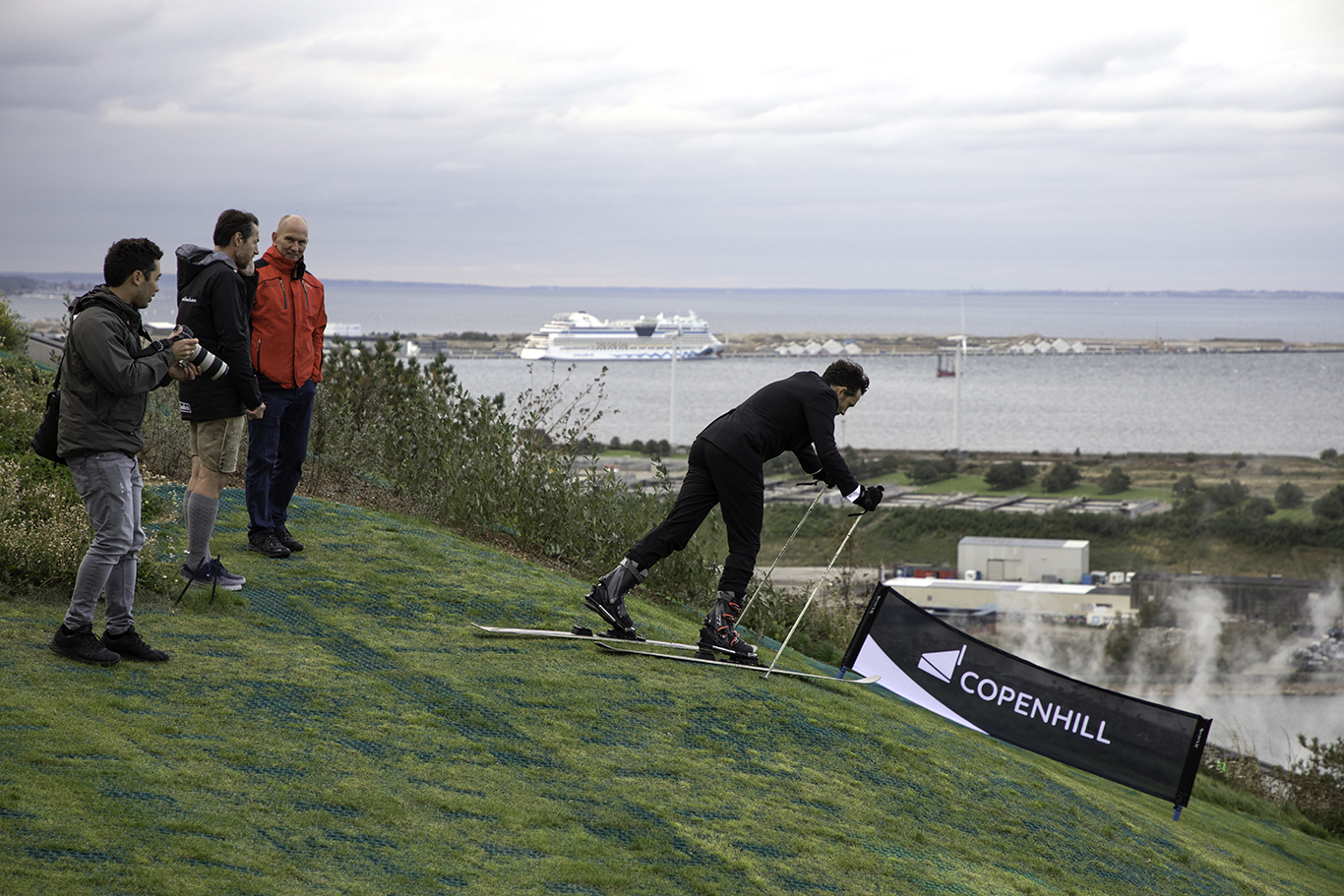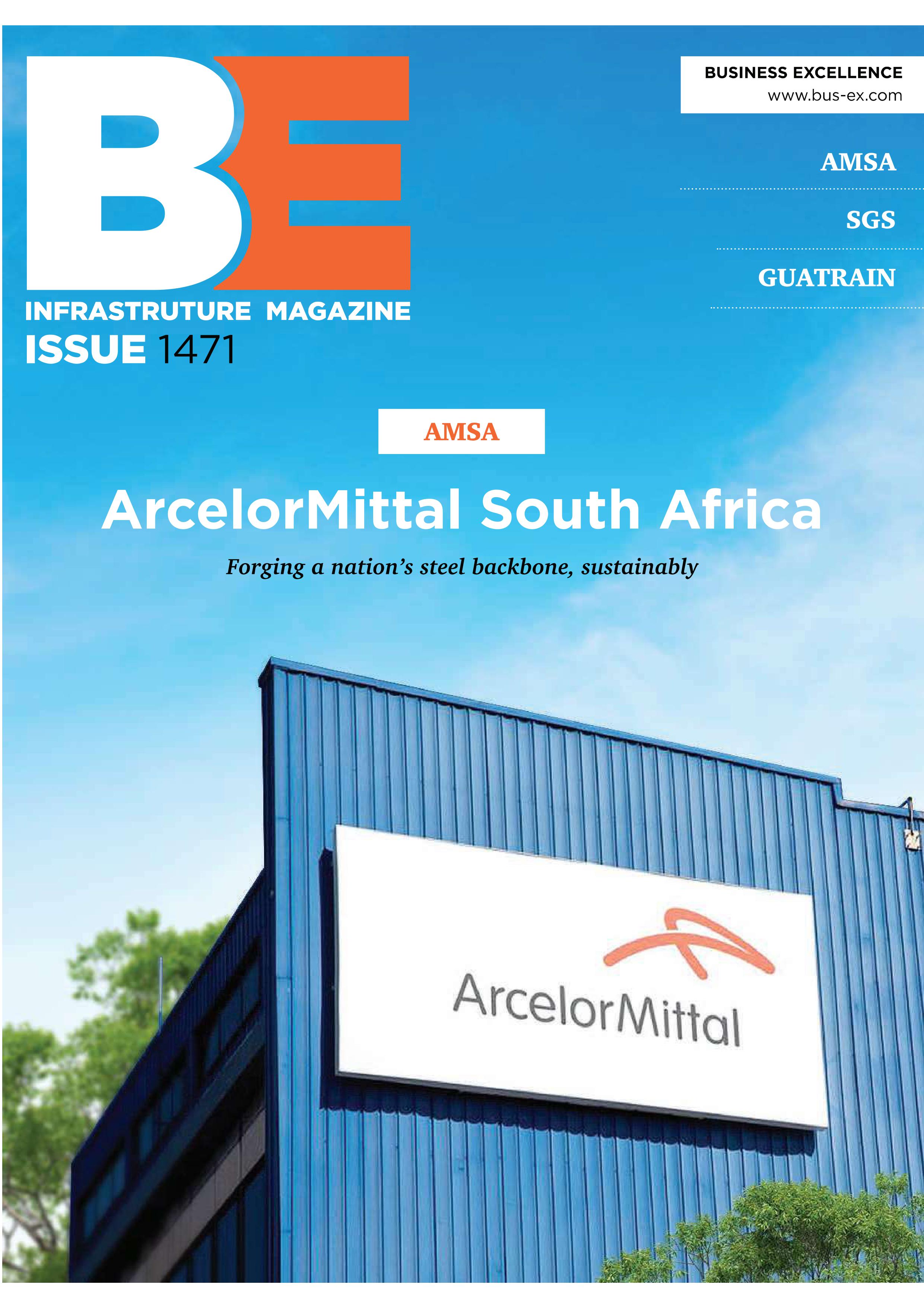
Barrick Gold holds some of the world’s most exciting gold projects in its South American portfolio, and is determined to lead the mining industry in responsible mining. Julia Smith reports on its contribution to sustainable development and environmental best practice.
The great spine of the Andes arcs for approximately 7,000 kilometers above the Pacific coast of South America. It is the longest continental mountain range on the planet—a glittering world of rock and ice for much of its length. But there is something else that glitters in these remote and inaccessible mountains. Ancient collisions between tectonic plates have endowed the Andes with some of the richest mineral deposits in the world in a treasure chest that includes gold, silver, copper, lead, zinc, platinum and emeralds.
It is gold, though, that exerts the most inexorable pull on mankind. The extravagant use of gold in pre-Columbian social and ritual life has given rise to some of the most enduring myths and legends. El Dorado was never found, but the mining industry in the region is one of the most important in the world and at its leading edge is Barrick South America.
Since the acquisition of Placer Dome in 2006, Barrick Gold Corporationhas been the largest pure gold mining company in the world, with headquarters in Toronto, Canada. At the end of 2010 the company had operations across all five continents with 19 wholly-owned mines, six joint venture mines, six advanced exploration and development projects, along with a number of closure and legacy properties and exploration sites.
Barrick’s South American holdings include the Pierina and Lagunas Norte gold mines in Peru; the Veladero gold mine in Argentina; the Cerro Casale project in Chile; and the world class Pascua-Lama project on the Chile and Argentina border which is almost at the point of production.
Pascua-Lama is set to become one of the most important mines in Barrick’s global portfolio. As measured at the end of 2010, it held proven and probable reserves of 17.8 million ounces of gold, with a further 671 million ounces of silver contained within the gold reserves. A detailed review of the underlying assumptions and trends for Pascua-Lama was completed in the second quarter of 2011. This led to Barrick increasing its projected expenditure to maintain the schedule for bringing the project into full production by mid-2013. The total pre-production capital required is now estimated at $4.7-$5.0 billion.
The project is at an elevation of 5,000 meters on the edge of Chile’s Huasco province and San Juan province in Argentina, and has been in pre-development for over a decade. It is unique for both the technical challenges involved in working at this level of altitude and also because it is a bi-national project falling under the national remit of the governments of both Argentina and Chile.
Best practice
South America has a special importance for Barrick Gold. In 2010, Barrick’s operations in South America produced 2.1 million ounces of gold at total cash costs of $243 per ounce – ranking the company as the lowest cost producer in the region. However, Barrick would prefer to be judged not on the size of its portfolio, but on its commitment to operate to the highest international and ethical standards.
Barrick has determined to take a lead in environmental best practice and to make the most positive contribution possible to the welfare and development of the communities and countries in which it operates. Its approach was formulated five years ago when the company first published comprehensive community engagement and sustainable development guidelines for implementation across all its operations.
In 2005, Barrick was an early signatory to the UN Global Compact (UNGC) in an initiative which directly involves the business community in tackling some of the most pressing social and environmental challenges of our time. The principles of the Global Compact are based on internationally recognized norms and conventions in four critical areas: human rights, labor standards, the environment and anti-corruption.
The company is also a signatory to a number of voluntary codes and initiatives that address a range of economic, social and environmental issues. These include the Carbon Disclosure Project, the International Cyanide Management Code, Transparency International (Canada) and the Voluntary Principles on Security and Human Rights.
The nearest communities to Pascua-Lama are 150 kilometers away but the development work has stressed extensive consultation to mitigate the project’s environmental impact and to ensure that it delivers optimum value to the economic development of the region.
More than 5,500 direct new jobs will be created during the three-year construction phase. Once in production, the mine will employ approximately 1,600 workers over its 23-year life. It is also estimated that there will be at least 2.5 indirect jobs created for each permanent job during construction and operation.
Many opportunities have been created for local suppliers who have supplied a host of items including cement, drilling and equipment rental services, ground support services, pumps and components, steel and safety items. Local procurement is a priority when it can be achieved in accordance with strict quality and safety guidelines.
Pascua-Lama will maximize local employment by putting training programs in place to ensure that local people and businesses benefit economically. Barrick’s ultimate goal is to be a catalyst for community development, as well as building the safest and most environmentally sensitive project possible.
However, the nature of the work has also created opportunities for some of the world’s leading suppliers of heavy plant and machinery. Cinter, Minera Zlato, Metso, John Deere and AK Drilling have all been involved in Pascua-Lama and their contribution has been critical in advancing the project so rapidly. Finning International is another globally recognized name in the mining industry which has had a particularly strong involvement in the project. The Caterpillar brand has achieved an iconic status, representing the best and most complete line of heavy equipment in the world specifically designed for mining operations. Finning is the leading global Caterpillar equipment dealer and has been selling, renting and servicing Caterpillar equipment since 1933.
Along with a range of influential state and NGO partners, Barrick is a member of the Atacama Commitment, a powerful alliance designed to improve many facets of life for the people of the region. The focus of the Atacama Commitment is on improving economic and social conditions surrounding the Pascua-Lama and Cerro Casale projects by addressing their root causes: lack of educational resources, poverty, and poor housing conditions.
It includes a housing project, which will re-house 3,000 people from slum dwellings, a financial contribution towards the construction of a much-needed rehabilitation center for children with disabilities and an educational drive to extend the teaching of technology in local classrooms with Class 21.
The Class 21 program, in partnership with the Cisneros Foundation, will upgrade teaching skills and support student learning through the use of computers and technology. Thirteen schools will participate over five years, benefitting 2,500 students and their teachers. The project will install 600 computers in schools that have had little or no access to technology in the past.
As Barrick’s other Chilean project, Cerro Casale, moves forward, the Atacama Commitment has been expanded to these communities also. In May 2011, Barrick signed a $1.7 million agreement with local government in Tierra Amarilla, near Cerro Casale, to assist with upgrading education, the environment and social infrastructure.
Cerro Casale is an exploratory joint venture between Barrick and Kinross Gold Corporation. Early in 2010, Barrick acquired an additional 25 percent interest in the project from Kinross, increasing the company’s interest to 75 percent.
Although the project is still at an early development phase, Barrick has already begun a community outreach program to inform local residents about the work and encourage their interest and participation. In late 2009 and early 2010, company representatives met with government and community leaders, as well as residents of surrounding towns, to provide an overview of the project and the opportunities it will create, and information about the environmental and social studies that have been completed.
The extent to which the mining industry has been able to contribute to economic and social development in South America relies on a complex interplay of factors. However, Chile is generally highlighted as an excellent example of the contribution the industry can make to national development efforts.
A recent study by the International Council for Mining and Metals (ICMM) showed that the mining industry has contributed to marked improvements in Chile’s general macroeconomic health since the late 1980s. These have translated into improvements in living conditions and poverty reduction and the proportion of Chileans living below the poverty line decreased by 50 percent during the period 1990 to 2000. Notably, these gains were most apparent in mining-related regions of the country and Barrick is determined that this trend should continue.
Renewable energy
The town of La Higuera in Northern Chile is the location a $70 million wind farm project. It is a landmark achievement, representing the first project of its kind ever to be undertaken by a mining company in Chile and is intended to complement Barrick’s broader climate change strategy. The wind farm consists of 10 wind turbines that generate 20 megawatts of power, enough to supply the energy needs of 10,000 families and has the capacity to expand to 18 turbines which would generate 36 megawatts. The power that is generated feeds directly into Chile's Central Interconnected Systems power grid.
“Barrick has made important changes and improvements in South America in recent years, creating an energy efficiency culture, developing renewable energy projects and defining our carbon footprint,”said Fernando Rodriguez, Barrick’s environment director for the South America region.
“The inauguration of this wind farm is a milestone for Barrick, reflecting our belief that renewable energy and energy conservation benefit both the environment and our company,” added Igor Gonzales, president of Barrick South America. “We will continue to explore innovative technologies to make our company more energy efficient and to reduce our carbon footprint.”
The wind farm in Chile learned much from an earlier successful project in Argentina. In 2007, Barrick unveiled an $8.5 million investment in a wind turbine that now provides up to 20 percent of the electricity needs for its Veladero mine.
Construction of Veladero began in 2003 and the mine’s positive impact has been well-documented in a recent study by the Chilean consultancy firm Consultora Malthus. “Veladero has created a more stable and diversified economy in the province of San Juan,” the study noted. “Positive employment trends, sectoral activity and growth in local tax revenues are all clear signals of Veladero’s direct and indirect impact.”
To date the mine has created nearly 1,000 direct jobs and has supported the creation of another 5,000 indirect jobs across the province. The report estimates that Veladero alone accounts for 23 percent of the province’s economy and it has led to a 38 percent increase in regional employment. “One of the most significant effects of the mine is that is has diversified the economy,” the study stated. “It has generated new demand and contributed to stable, long-term growth.”
Supporting Peru
Peru ranks as the world’s fifth largest producer of gold and the largest deposits are those found in the tertiary volcanic rocks in the high cordillera above 3800 meters in north-central Peru. This is where Barrick operates two mines - the Pierina mine, in the Ancash region, and Lagunas Norte, located approximately 175 kilometers away.
At the national level, Peru has struggled to translate its mineral wealth into broad-based economic development, but Barrick is proud of its achievements at the Pierina mine. An independent economic assessment concluded that by almost any evaluation measure, ranging from literacy rates, levels of poverty, households with potable drinking water, or even the ownership of a color TV, life had significantly improved for residents of the surrounding districts of Independencia and Jangas since the mine opened. Poverty rates in the district of Jangas, located closest to the mine, have dropped from 80 percent in 1993 to 31 percent by 2007, which is well below the national average.
Barrick’s efforts in Peru have been formally recognized with a Socially Responsible Company Award from Peru 2021, a non-profit organization that promotes corporate social responsibility. The award is presented to companies that improve the quality of life of their employees, and that are committed to the environment, business ethics, and developing sustainable communities around their operations. “Barrick is extremely proud to receive this award because responsible mining is a central aspect of our business,” said Igor Gonzales. “We believe in promoting excellence internally with employees and externally with neighboring communities.”
Unlike Chile, Peru still faces widespread poverty and deprivation. Barrick has partnered with World Vision Canada, a Christian relief organization, to combat child malnutrition and illness. Through World Vision’s comprehensive nutrition program in Peru local households are educated about essential food groups and are provided with information about hygiene and safe medications. Families also receive training to establish home gardens to produce fruit and vegetable crops. In addition to providing nutritious food for children, surplus garden produce is sold to local markets to raise household income. This partnership is designed to provide sustainable, community-based solutions that are vital to improving health and fostering economic development in the region.
Lagunas Norte in north-central Peru has become the site of an internationally acclaimed remediation project. The mine has proven gold reserves of 6.6 million ounces and is Barrick’s lowest cost operation. In one of the mining industry’s most ambitious and successful remediation projects, Barrick has worked since 2005 to reclaim Callacuyán, an old coal mine once owned by the state of Peru, which is located within the current site boundaries. After the mine was abandoned, several damaging environmental legacy issues arose, including acid rock drainage and the mine’s coal waste dumps.
The reclamation project has focused on two major issues: firstly improving water quality in the Perejil River basin and subsequently replacing vegetation. Earlier pollution by a nearby state-owned mining operation had generated significant concerns among local communities about water contamination and pollution. To demonstrate Barrick’s commitment to maintaining the purity of future water supplies, a community water monitoring program now monitors the two watersheds surrounding the mine. Communities elect representatives to be trained in water monitoring procedures and each representative is responsible for showing and communicating the results to their community after samples have been examined by independent certified laboratories.
To regenerate flora and fauna, Barrick has worked to reduce the effects of acid mine drainage by lining and rehabilitating two coal waste dumps as well as dismantling an old camp site, creating a wetland area to treat acidic water and collect left-over abandoned coal from the operation. The coal was removed after the environmental team inserted clay liners to minimize permeability and the land then covered with topsoil to encourage the growth of new vegetation. Through a partnership with the College of Biology at the National University in Trujillo, native cacti and orchids have been successfully re-introduced and are now flowering again.
Again, Barrick was able to draw on other similar experiences at the Veladero Mine, which received an international award in 2008 from the Latin American Mining Organization (OLAMI), which recognizes excellence in sustainable development in the mining sector, for the success of that mine’s vegetation plan. Execution of the Veladero plan is helping to restore natural areas of vegetation which were disturbed during the construction of the mine camp, the building of roads and mining activity.
Global recognition
Barrick has worked to advance its sustainability drive on many different fronts and the company is delighted to be ranked as a global leader in corporate social responsibility by the Dow Jones Sustainability World Index (DJSI) for the fourth consecutive year. The DJSI World Index independently evaluates 2,500 companies using rigorous criteria in the areas of corporate, economic, environmental, and social performance to identify the top 10 percent of performers.
The company is particularly proud of its achievements in the environmental domain. Last year, 15 percent of Barrick’s purchased and self-generated electricity came from renewable sources and this is set to grow year on year. In 2010, Barrick completed more than 25 projects to reduce its energy and greenhouse gas footprint - the largest number of environmental implementations in its history. Together, these programs reduced GHG emissions by 206,200 tons in 2010 and last year Barrick was named as a carbon disclosure leader in Canada for the second consecutive year, ranking among the top five companies in an annual survey conducted by the Carbon Disclosure Project.
Peter Munk, chairman and founder of Barrick Gold, gave out one of the most important signals yet on Barrick’s approach to business when he thus summarized the company’s position. “Barrick’s reputation rests on responsibility. Good corporate citizenship is a calling card that precedes us wherever we go.”
DOWNLOAD
 BarrickSA-AM-May12-Bro-s_0.pdf
BarrickSA-AM-May12-Bro-s_0.pdf













